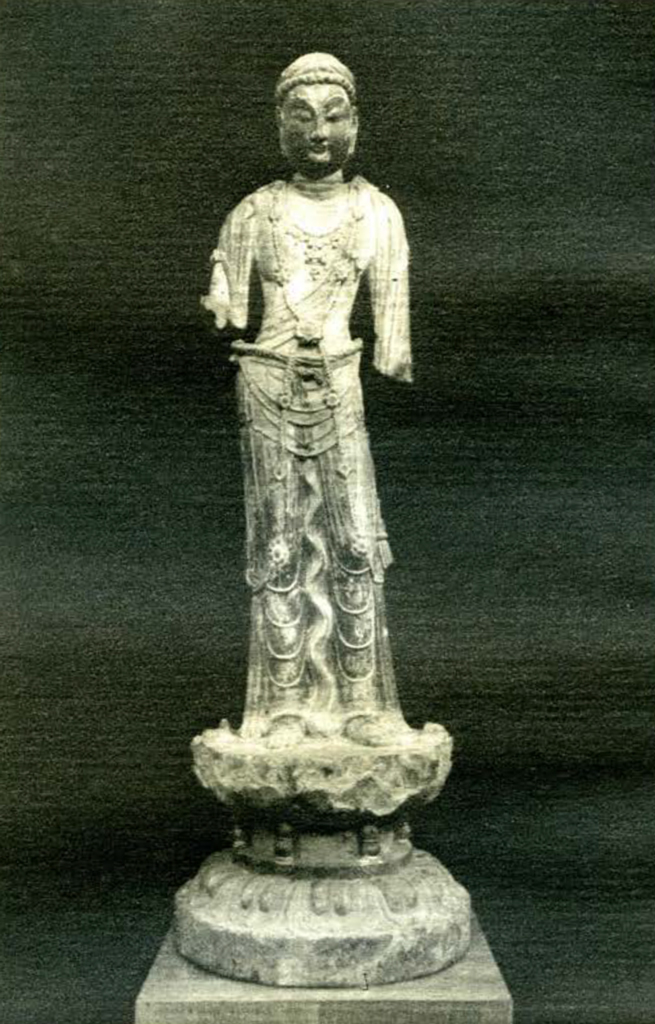THERE are included in the Museum’s collection of Chinese sculpture, two small stone statues of Bodhisattvas, or minor Buddhist deities, which can safely be described as the finest examples of their period yet discovered. These, illustrated in Plate VI and VII, obviously belong to the T’ang dynasty, that period in which Buddhist sculpture reached its height of perfection. But the T’ang dynasty lasted a full three centuries, and it cannot be expected that the sculptors of this period maintained a constant supremacy during the whole dynasty; indeed, we find that in the early years the sculptors, just escaped from the preceding primitive periods in which strict conventions prescribed the modes of expression, took on a new freedom, while in the last half century of T’ang, the artists had become too accomplished and their works suffered through the excellence of pure craftsmanship. It can be demonstrated, we feel, that it was at the precise point when a perfect balance was reached between these opposing artistic factors that the two present figures were carved. This could not have been a long period, for we know by analogies in Western Art how brief is the period of perfection compared with those of development and of degeneration. The height of Greek sculpture falls within the years 550-350 B.C. In China the height of T’ang sculpture probably fell nearer to the beginning of the dynasty than towards the end, for the history of every Chinese dynasty has been an initial period of great vigour followed by a long period of gradual degeneration. It is probably safe to say, therefore, that these figures of Bodhisattvas were carved no later than A.D. 700.

Museum Object Number: C112

Museum Object Number: C111
It is, we feel, important to indicate in a field of studies which are necessarily obscure to the majority, precisely the reasons why the present statues can be rated among the finest examples of Buddhist sculpture. In the early periods the body of a deity is rendered with spiritual force but without realism. It is a symbol only of a supernatural presence. In the late periods the body is wholly realistic, almost grossly so, with an accentuation of bony structure and muscles that prove the observation and ability of the sculptor to portray exact details, but indicate, too, an entire lack of spiritual inspiration behind the chisel. It is almost axiomatic that man cannot create god too exactly in his own image and yet preserve his godhead. Our statues strike a happy medium. There is realism of anatomical structure in them, but it is not obtrusive; they remain deities, though possessed of certain lithe human qualities. The richly jewelled chains, the pleasantly handled draperies are not slavish copies of actual jewelry, of true scarves and tunics, but attractive symbols which unconsciously we accept-and far more did the Buddhist devotee accept them-as indications of what in the superior realm of deities might be the costume of the holy ones.

